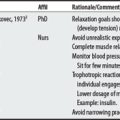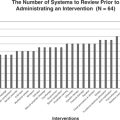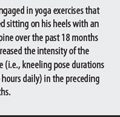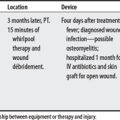Chapter 58 Shiatsu
OVERVIEW.
Shiatsu is a Japanese finger pressure technique used primarily for musculoskeletal (neck, shoulder, low back, arthritic) and psychological (depression, stress, anxiety) problems. The belief is that during illness, qi energy is either excessive, deficient, or in a state of imbalance. The goal is to stimulate the free flow of qi energy through the meridians or energy channels. In shiatsu, the practitioner’s body weight is used to apply bilateral finger pressure along the client’s meridians and acupuncture points in order to access qi energy.1,2
SUMMARY: CONTRAINDICATIONS AND PRECAUTIONS.
Two sources cited a total of 30 concerns for shiatsu. Battermann1 cited 24 concerns, whereas Bereford-Cooke2 cited 14. The largest proportion of concerns was related to circulation (26%) and pregnancy (16%). Modification of technique (lighter pressure) was recommended over lymphatic tissue,1 during pregnancy,1 and in people with hypertension.2 Remarkably, no pressure-related concerns were mentioned for work over superficial nerves (see Herskovitz et al3 and Mumm et al4 below).
OTHER ISSUES: OVERLY AGGRESSIVE TECHNIQUE.
In a 1992 case report, Herskovitz et al3 reported a 61-year-old who sustained an adductor pollicis brevus nerve compression following strong digital shiatsu pressure of the palm and thenar muscle. In 1993, Mumm et al4 reported a 64-year-old woman with a prior history of severe varicella as a child and who presented with vesicular zoster over the 8th cervical dermatome following very vigorous shiatsu massage.
Note: In 2002, Elliott and Taylor5 reported a case of an ICA dissection associated with a “shiatsu massager.” Note that this injury was machine-induced and not attributed to a practitioner’s manual technique of shiatsu.
CONTRAINDICATIONS AND PRECAUTIONS
A00-B99 CERTAIN INFECTIONS AND PARASITIC DISEASES
D50-D89 DISEASES OF BLOOD AND BLOOD-FORMING ORGANS AND CERTAIN DISORDERS
E00-E90 ENDOCRINE, NUTRITIONAL AND METABOLIC DISEASES
I00-I99 DISEASES OF THE CIRCULATORY SYSTEM
J00-J99 DISEASES OF THE RESPIRATORY SYSTEM
K00-K93 DISEASES OF THE DIGESTIVE SYSTEM
L00-L99 DISEASES OF THE SKIN AND SUBCUTANEOUS TISSUE
M00-M99 DISEASES OF THE MUSCULOSKELETAL SYSTEM AND CONNECTIVE TISSUE
O00-O99 PREGNANCY, CHILDBIRTH, AND PUERPERIUM
R00-R99 SYMPTOMS, SIGNS, AND ABNORMAL CLINICAL AND LABORATORY FINDINGS (NOT ELSEWHERE CLASSIFIED)
S00-T98 INJURY, POISONING, AND CERTAIN OTHER CONSEQUENCES OF EXTERNAL CAUSES
1 Battermann A. Shiatsu with physiotherapy—an integrative approach. In: Charman RA, editor. Complementary therapies for physical therapists. Oxford: Butterworth-Heinemann, 2000.
2 Beresford-Cooke C. Shiatsu theory and practice: a comprehensive text for the student and professional. New York: Churchill Livingstone, 1996.
3 Herskovitz S, Strauch B, Gordon MJ. Shiatsu massage-induced injury of the median recurrent motor branch. Muscle Nerve. 1992;15(10):1215.
4 Mumm AH, Morens DM, Elm JL, et al. Zoster after shiatsu massage. Lancet. 1993;341(8842):447.
5 Elliott MA, Taylor LP. “Shiatsu sympathectomy”: ICA dissection associated with a shiatsu massager. Neurology. 2002;58(8):1302-1304.
6 Tsuboi K, Tsuboi K. Retinal and cerebral artery embolism after “shiatsu” on the neck [letter]. Stroke. 2001;32(10):2441-2442.
7 Eliska O, Eliskova M. Are peripheral lymphatics damaged by high pressure manual massage? Lymphology. 1995;28(1):1-3.
























